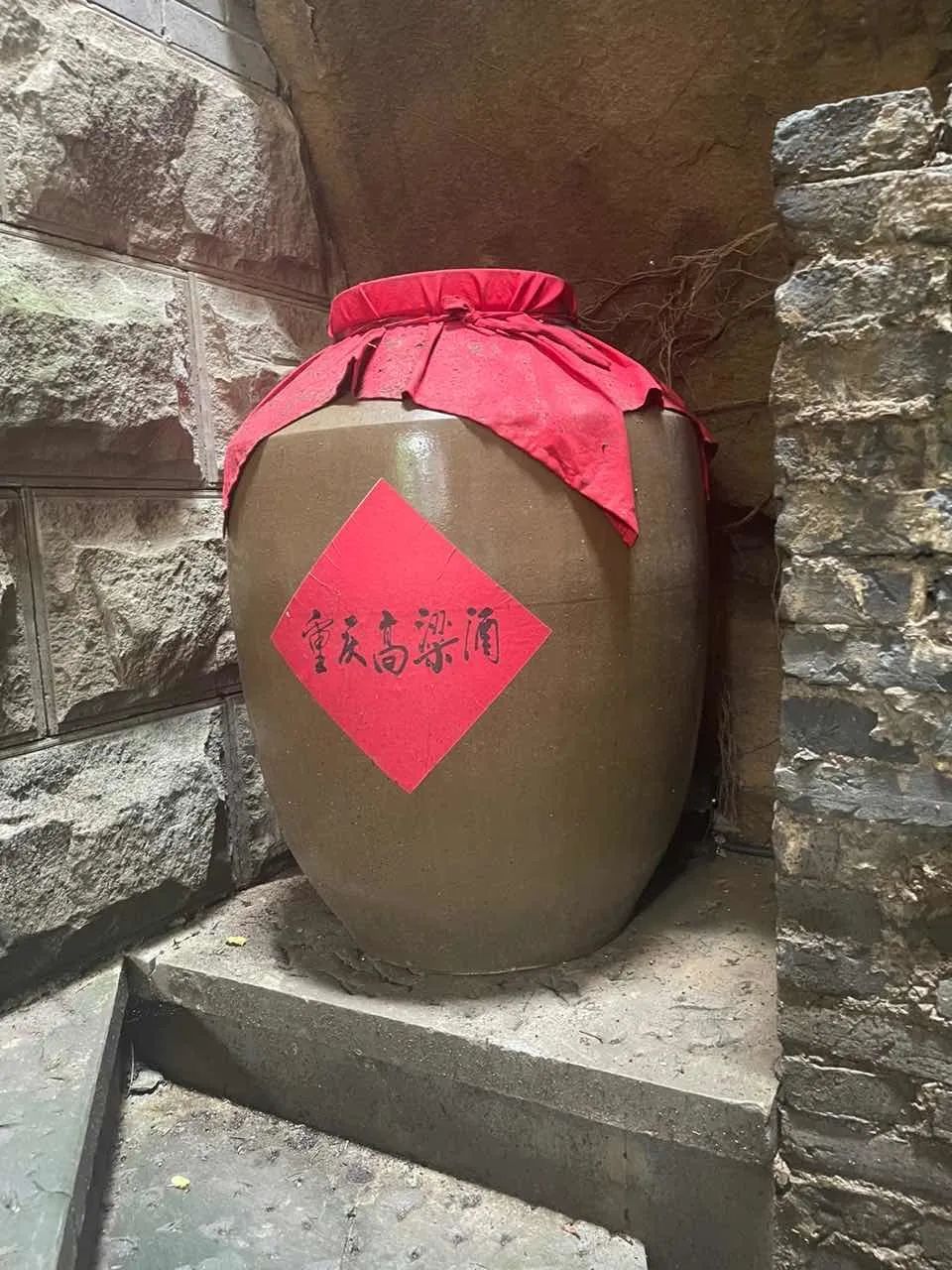Fine wine and bomb shelters define one of the urban specialties in Southwest China's Chongqing Municipality. What will it be like when these two cultural symbols collide? The Chongqing Kaoliang Liquor Culture Experience Center will give you the answer.

Chongqing Kaoliang Liquor Culture Experience Center. (Photo provided to iChongqing)
Air-raid shelter: natural warehouse for liquor
According to the book The Forgotten Glory - Chongqing's History of Liquor in the Historical Context, liquor in Chongqing can be traced back to the Western Zhou Dynasty, became famous in the Warring States Period, gained its popularity in the Tang and Song dynasties, prospered in the Late Qing and early 20th century as it came out top across China in terms of quality, production volume and sales, then declined in the mid-20th century, and has revived today. Chongqing's liquor, as old as the city itself, has a history of three thousand years, and endowed the city with cultural profoundness.

The Kaoliang Liquor is kept in the Center. (Photo provided to iChongqing)
Air-raid shelters are a civil air defense project against air attacks and to reduce damage. Mostly used to store food or military supplies, or as an emergency refuge for residents, it is a symbol of Chongqing's “resilience in bombings” with dense distribution in the "mother town" of Chongqing.

The view of air-raid shelters. (Photo provided to iChongqing)
"In the era of peace, a large number of air-raid shelters have been left unused." Air-raid shelters have been increasingly put into reuse in Yuzhong in recent years, and those with distinctive cultural elements and consumption scenarios were created such as the shelters renovated for enjoying the cool, as wine cellars, or as hot pot restaurants. It is against such a background that the Chongqing Kaoliang Liquor Culture Experience Center was set up.
The center covers an area of more than 200 square meters and is located conspicuously near the entrance of Binjiang Road, part of Dongshuimen Old Street. "The air-raid shelter, warm in winter and cool in summer, has a constant temperature and is a natural warehouse for liquor." Zeng Tao, head of the center, told the reporter that the reason why the air-raid shelter here was selected among many others is that Dongshuimen is an important symbol of the building of Chongqing as a city, and the air-raid shelter here is historically and culturally essential as it served as the Food and Drinks Company's storehouse of spirit and liquor after liberation.
"Placing the museum in the air-raid shelter retains the unique memory of Chongqing as the shelter functions as a place for tasting liquor and popularizing the city's culture of liquor and liquor-making technology, which is wonderful," said Zeng Tao.

The interior view of Chongqing Kaoliang Liquor Culture Experience Center. (Photo provided to iChongqing)
Experiencing the whole brewing process
The Center, with an investment of one million yuan, is the first museum specializing in the culture and history of liquor in Chongqing and consists of a Chongqing Liquor History and Culture Exhibition Gallery and a Chongqing Kaoliang Liquor Brewing Technology Hall.

The interior view of Chongqing Kaoliang Liquor Culture Experience Center. (Photo provided to iChongqing)
Walking across the hall of a quaint stilted building and up a stone staircase, you will encounter the Chongqing Liquor History and Culture Exhibition Gallery. Here, you will be familiarized with the brief history of the development of Chongqing liquor from pre-Qin to the present day, as well as its production areas, technology, products, brands, related figures, etc.
"The gallery, modeled on the stilted buildings on the bank of the Yangtze River in Chongqing, represents the appearance of Dongshuimen a hundred years ago." Zeng Tao said that the items and documents displayed here have been collected from all over China or donated by professionals in liquor culture.
Chongqing Kaoliang Liquor Brewing Technology Hall has an air of life. It is modeled on the Jiangji brewing workshop in Baisha Town, Jiangjin, the birthplace of Chongqing Kaoliang Liquor. It presents the brewing technology covering "sorghum soaking, sorghum steaming, drying, and aspergillus planting, aspergillus cultivation and saccharification, fermentation, distilling and liquor collecting based on the foam". Visitors can experience the whole brewing process.

The interior view of Chongqing Kaoliang Liquor Culture Experience Center. (Photo provided to iChongqing)
At the bottom of the hall is a small cave for storing earthenware jars of liquor, among which is the original Kaoliang liquor produced in Baisha Town. There is an antique tavern at the entrance of the cave, where tourists can taste and buy authentic Kaoliang liquor from Chongqing.

The authentic Kaoliang liquor from Chongqing. (Photo provided to iChongqing)
The giant relief on the wall that vividly depicts the scenes of liquor making, buying, drinking and transporting is the most conspicuous. It is known that the relief, titled "The Liquor Kingdom of Baisha" and 1.9 meters tall and 11 meters long, is one of the largest about the culture of liquor in China. Based on the painting created by professors at Sichuan Fine Arts Institute (SCFAI), the relief illustrates the grand scene of "Caofang Street" in Baisha, the largest industrial area for liquor making in southwest China in late Qing, with 57 figures, over ten distilleries, dozens of boats, Chaotianzui Wharf on the label of Baisha, and Luxi Distillery.

The Liquor Kingdom of Baisha.(Photo provided to iChongqing)
"Each place has its own way of supporting its own inhabitants." Zeng Tao said that Chongqing has been famous sorghum-producing area since ancient times, especially the red glutinous sorghum suitable for liquor making. Chongqing Kaoliang liquor and its upright, plain and pure spirit have constituted a part of the city itself.
